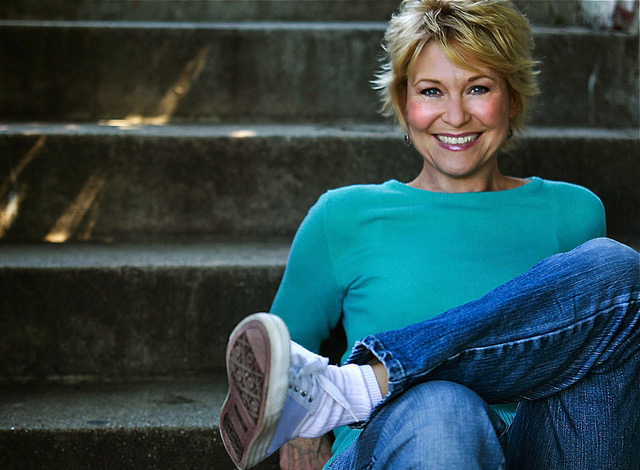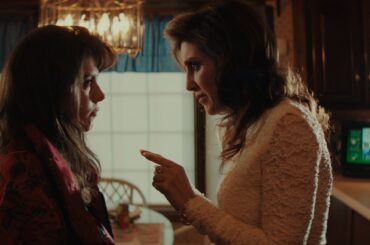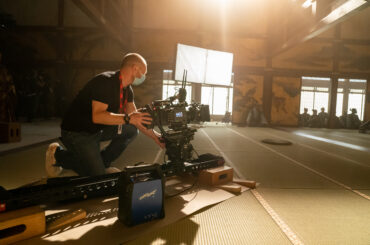Dee Wallace is a legendary Emmy Nominated actress with over 279 credits in movies and TV spanning her illustrious five-decade career. Known to many audiences as Mary the beleaguered mother in Steven Spielberg’s massive box office hit E.T. The Extra-Terrestrial, which for 9 years was the top-grossing film of all time. She is a bona fide “Scream Queen” with credits in essential horror films like Joe Dante’s classic werewolf film The Howling, Wes Craven’s The Hills Have Eyes, Peter Jackson’s The Frighteners, Cujo, Critters, and a favorite of director Rob Zombie. She has also appeared in over 200 commercials.
When she is not acting, Wallace works as a healer, host of a weekly call-in show, expert on the art of self-creation, and bestselling author of five books - most recently Born. A sought-after speaker and guest with numerous appearances around the world including Ted Talks, Oprah Winfrey, and E! True Hollywood Stories. With her warm smile and friendly demeanor, she has gained fans all over the world.
Wallace recently spoke to Immersive via Zoom, the conversation has been edited for clarity.
Can you tell me a little bit about growing up in Kansas?
Kansas is a great place to be from. I learned a lot of really good Midwestern qualities. I was taught responsibility, and I lived in a family where my mother was of service to a lot of cancer patients, so I feel often in my healing work. I’m carrying on her work in a more expanded way, but I appreciate every day the values I was raised with. I’m just expanding a lot on that now.
What inspired you to be an actress?
My mom was a beautiful actress in community theater, and she produced and directed all the religious plays at our church. I started as the baby Jesus and ended up as the Virgin Mary in the church place and I remember distinctly sitting in the congregation one Easter when my mother was doing a 30-minute reading on the crucifixion, and people from four states would come to see my mom perform and I looked around and all these people were weeping from watching her and I went, oh, I want to do this.
What was it like when you moved to Hollywood?
I left for New York at the end of the seventies stayed there for two years and moved to Hollywood after that, from that time I had never been out of Kansas in my life. By the time I moved to New York and started in ET was a little over seven years.
Tell us a little bit about making the excellent werewolf film, The Howling.
We had a lot of fun, even though we worked mostly nights, but I was doing The Howling with my then fiancé, Christopher Stone. It was a difficult physical and emotional ride doing that movie. We loved working with all of the old iconic actors that Joe brought in. Loved working with Joe and loved working with each other. But it was funny because Chris and I worked the opposite way. He was all in his head. He broke everything down much like Uta Hagen did. I had found my acting mentor, Charles Conrad, who taught me, it was based loosely on the Meisner method, but it was the opposite. You don’t break everything down. You don’t figure things out. You’re in the moment, and it’s all based on really, really high energy. And then you throw that energy onto whomever you’re working with.
Give us an example.
We had the scene where he got mad at me. We’re talking about the She-Wolf, and he has to slap me, right? Yes. And Joe says, alright, guys, well, we have to do this slap scene now. I’m sure you worked it out at home. Show me what you got too. And Chris turned around and said, I’m sorry, Joe, my leading lady doesn’t rehearse. And Joe looked at us and he went, you mean you’re not going to rehearse the stage slap? And I said, yeah, if you want to just rehearse the slap, it’s okay with me, but I know he knows how to give one, and I know I know how to take one. So we just shot it. And I looked at him right before, and I said, if you slap me, you know you’re in a hell of a lot of trouble.
Can you describe any of the experiences working with some of the older actors?
We just had a great time, and my fondest memory of working with all those older iconic actors is we would sit around the fire in between scenes and they would tell all their old Hollywood stories, and we just bonded over their stories, and we didn’t have as many of our own, but we shared a few, and it was Joe Dante and Dan Blatt, our wonderful producer whom I loved so much, he was really funny. Kevin McCarthy and I, of course, worked together in a couple of scenes in that, and yeah, it was tough because most of it was night shoots.
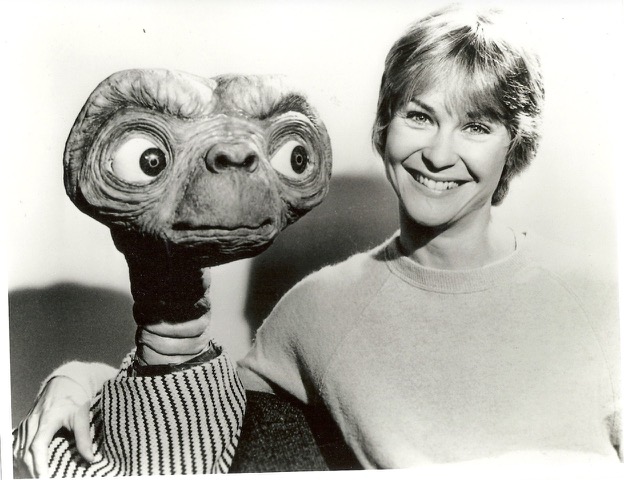
Tell me a little bit about how you got involved with the iconic film, E.T. The Extra-Terrestrial.
It’s another Hollywood story of mine. I had auditioned for Steven Spielberg for Used Cars. Steven works very far ahead, so he already had E.T. well on his radar. He wanted everyone in E.T. to be childlike… until the doctors and the researchers came in and he saw that quality in me, that naïveté, that Kansas innocence. And so when E.T. came along, they called and offered it to me. He had remembered me from that audition, and I didn’t even have to read for E.T. I remember there was so much secrecy back then, I guess people were stealing ideas and turning them into movies before the other movie got made. And so I had to go over behind locked doors and read the script, which was then called A Boy’s Life, and I called my agent and I said, I don’t think this is going to do a lot for me and my career, but I think it’s going to do a lot for the world, and I want to be a part of it.
That’s amazing, tell us about the on-set experience.
I remember walking on with my security badge the first day on the set, and I turned right to get to the dressing rooms and E.T. was standing there with three or four guys around him. They were talking about something, and I swear I stopped in my tracks. It was like watching a foreign alien with a soul, and he was just standing there. Nobody was working with him. But Carlo Rimbaldi just so beautifully captured the love and the heart of this little creature, and it’s the first time I think we ever saw an alien in that light.
It communicated unseen things and connections that people (and aliens) have with one another and how powerful they are.
We’re all one energy. We learned that in fifth grade. Everything’s energy. And so just like you and me, we’re not here together, but our consciousness is communicating. I do most of my private sessions, of which I do three or four a day over the phone. Because my just like a psychic reading or you don’t have to be with the person. You just simply have to connect with the energy and extrapolate the message and the information from the energy that you’re connecting with.
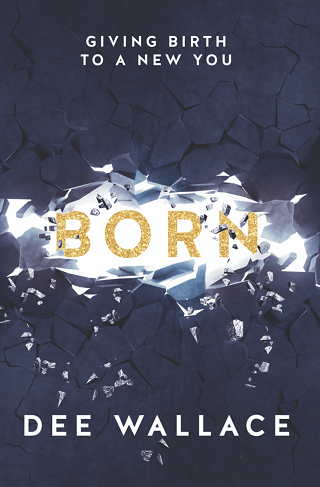
When did you make the transition into being an author? What brought that on?
I had been doing my healing work for a while, and one of my clients at the time was a book editor, she contacted me and said, Dee, you need to write a book. So my first book was the name of my work Conscious Creation, because most of us are creating unconsciously, most of us don’t realize that we can and must choose our perspectives, our beliefs, our feelings, and our thoughts. They don’t have to be things that just happen. We need to choose the beliefs and the thoughts that support what we want and most of us do.
What are you working on now? Are you working on a new book?
I’m working on a new book, and I just finished a horror film and I’m getting ready to leave to do, well, it’s kind of a murder mystery film, and I’m working on a new book called Horror Stories from a Life in Horror Films. I’m only on chapter four right now, but people think most of the horror is in the script. I say half of my life is dedicated to horror films, and the other half is dedicated to healing people from fear. Have you ever googled the positive effects of horror films? They’re so good for your brain, for your nervous system, for endorphins. Well, first of all, you get to practice handling stuff that you think you can’t handle in a safe place where you can.
What do you think of the term character actor or character actress, and do you consider yourself part of that?
I think I’m blessed by being able to go into leading lady parts and also hide behind a fabulous character like I did in Three From Hell. Rob Zombie sent it to me and I wrote back and I said, oh my God, I want to do this part, but I have to look like shit, no makeup. I’m going to dye my hair brown. I want horn-rim glasses. And he wrote back, okay. But I guess he had a critic contact him and say, I’m reviewing the film and I love it, but did you cut Dee Wallace? I didn’t find her in the film, and that’s the greatest compliment you can give an actor, is that I brought that part of the guard to life and people didn’t even know it was me.
You can keep up to date with Dee Wallace at her site: iamdeewallace.com


